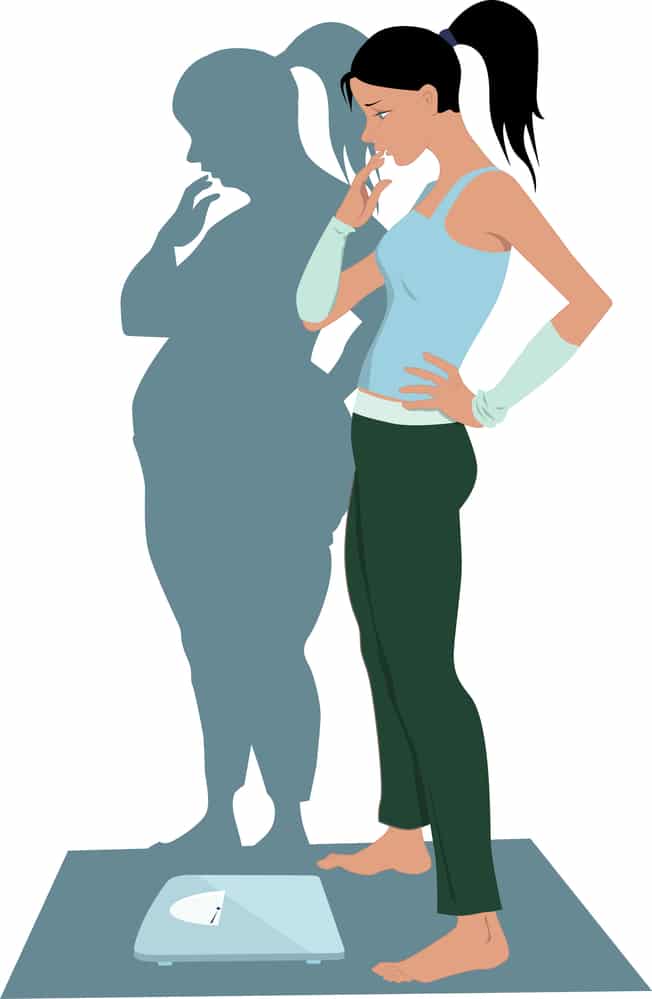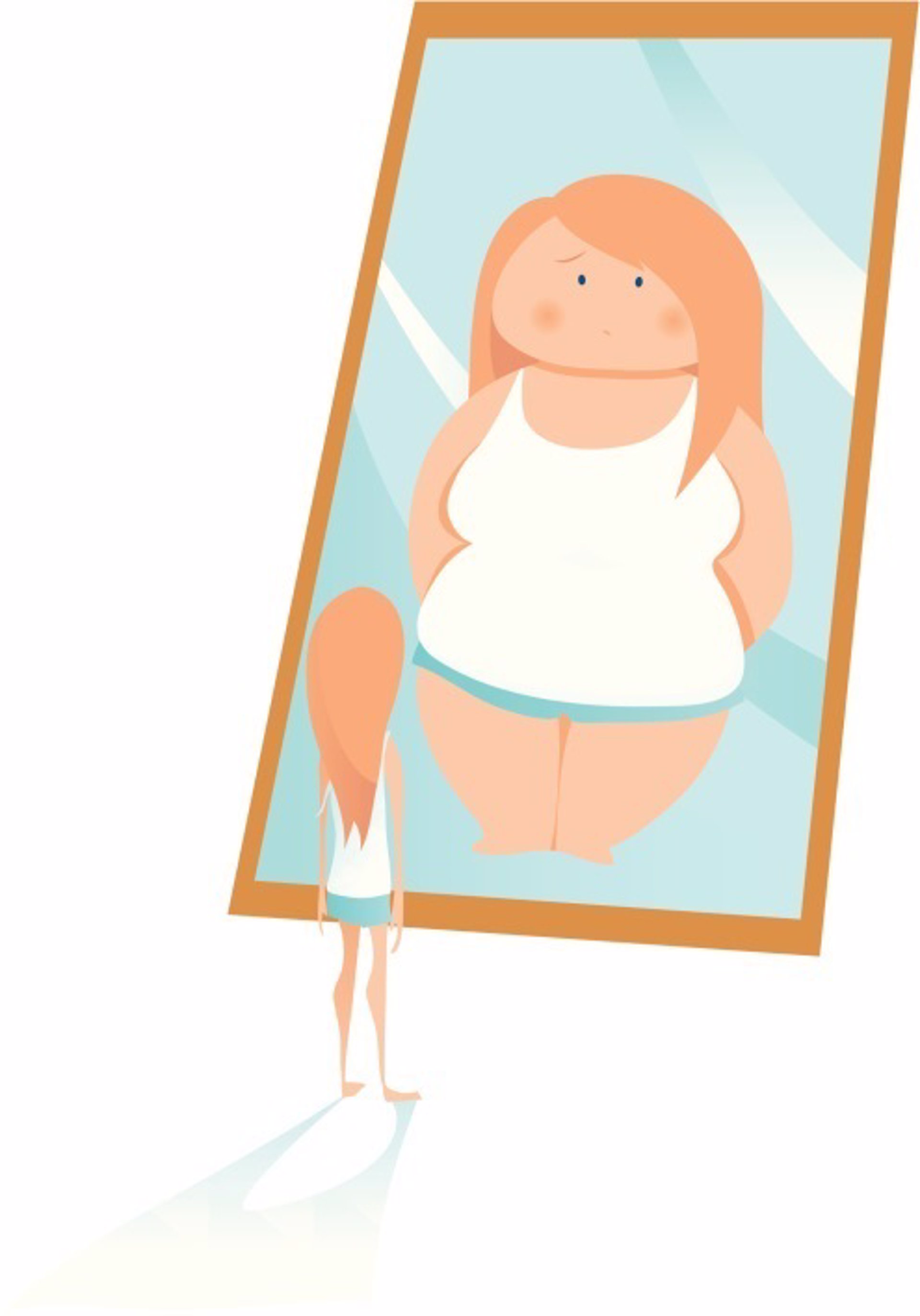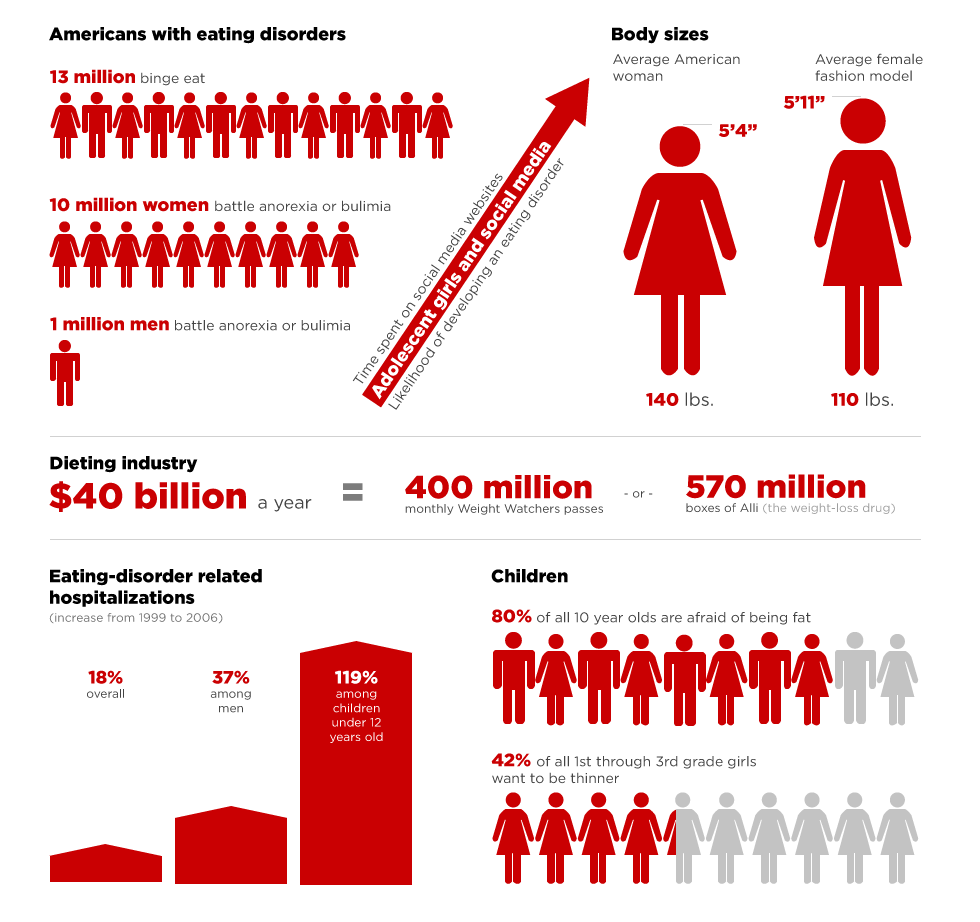Mirror, Mirror on the Wall: Understanding Body Image and Eating Disorders on a College Campus
You told yourself everyday that in college that you would eat a salad for dinner. After triumphantly zipping up the over-stuffed suitcase that your Mom said there was no way would close, and throwing boxes and bags spilling over with your belongings in the car, you arrived at college looking forward to the newfound freedoms you would experience.
No more curfews, no more having to clean your room, no more chores – you were ready to take everything in stride. You told yourself that you would exercise regularly, ignore late night food cravings that were known to arise during late night study sessions, and avoid the dreaded “Freshman 15” that your neighbor who had gone to college the year before had warned you about. You told yourself that you would go to that yoga class in the Recreation Center once a week that was always promoted in the Facebook group, take care of yourself, and find time for yourself.
You told yourself all of this, and didn’t picture yourself here.
Counting how many calories were in that granola bar you ate earlier that day. Or counting how many it would be if you did go out to dinner with your friends that night and ordered a burger.
Always counting, always striving for perfection, always staring at your imperfections until they are all you could see.
Pressures College Students Face
Coming to college, students face a variety of psychological and social factors that intertwine to create an image of perfection that many strive to achieve. Issues regarding self-esteem, lack of control, and loneliness join in conjunction with the transition, as students’ insecurities become vulnerable as they try to establish themselves in their new environment. Often, other mental illnesses emerge as well.
Interview with William Skerker, LCSW, LRSW, ACSW
William Skerker opened up his private psychotherapy practice in Manhattan in 1978. He has worked primarily with anxiety, depression, more serious mental disorders, social and marital issues, and addictions of varying types and intensity. He states, "In particular, I had a great interest in working with bipolar and schizophrenic clients, as I had internships with that population before, and I became focused on pyschosomatic symptomatology and its emotional and behavioral manifestations. This led me naturally to seek a paradigm for treatment of both body and mind that would promote healthier and happier life experiences."
"Without trying to do so, I became an integrative therapist with a particular focus on mind, body, behavior, and health and wellness."
—William Skerker
Skerker explains that throughout time, he has expanded his specialties to include eating disorders. Nine years ago, he developed a free monthly workshop called "First Things First for Eating Disorders."
"In 1978 anorexia, bulimia, and binge eating disorders were not common topics for discussion and many had never heard of these afflictions. To my eyes three events, among others, brought eating disorders into high relief. First, in the late 1960’s the naturally thin model Twiggy was among the first to exhibit low body weight as a metaphor for beauty. Second, in the 1970’s, singer Karen Carpenter created alarm with her losing battle and subsequent death in 1983 from anorexia, all telecast on television. Third, Princess Diana, married to Prince Charles of Wales, was sadly afflicted with bulimia as a coping mechanism. In the 1980’s her going public as such, and her efforts to help bulimia sufferers worldwide will never be forgotten."
- William Skerker
Skerker explains that he views rampant eating disorders and addictions "as much cultural diseases as they are behavioral and emotional disorders." He indicates that conformity and media culture have perpetuated negative body perceptions.
"In our 21st Century local and familial restrictive influences have been largely marginalized and media culture becomes modern lifestyle."
—William Skerker
Statistics
Classified as a mental illness by the American Psychiatric Association, eating disorders are often linked with other mental illnesses such as depression and anxiety. Eating disorders are deemed to have the highest mortality rate; research indicates that between 5-20% of individuals fighting Anorexia will die, and the probability of death increases depending on how long the individual has suffered from the disorder.
On a national scale, Anorexia is ranked as the third most common choice illness among adolescent females, and at any given time, approximately 5% of the US population has undiagnosed Bulimia. These statistics serve to demonstrate the prevalence of eating disorders in US society, as media culture perpetuates "ideal" body stereotypes, inherently imprinting negative values on many individuals.
According to the National Eating Disorders Estimation, approximately 10-20% of women and 4-10% of men in college have dealt with eating disorders. Statistics indicate that eating disorders usually begin between 18-21 years of age, which coincides with the age of many college students.
In research conducted by the National Eating Disorder Association (NEDA) in 2013, 91% of women on a college campus had made attempts to control their body weight through dieting. Out of this percentage, 22% reported that they had dieted “often” or “always.” The survey also uncovered that 25% of college-aged women engaged in binge-eating and purging habits. A second survey out of 185 female students on a college campus revealed that 58% felt pressured to be a certain weight.
Body Image Perpetuated by Media
"I think social media has a lot to do with it [body image]. Boys are told they have to be strong, muscular and fit in order to elude sex appeal. Same thing goes for girls...every advertisement is sex-related whether you realize it or not."
Anonymous, female student '19 at The College of New Jersey
The role of social media in perpetuating body stereotypes is often discussed in the field of physical health. We live in a current age of social media, in which youth and adults alike take to social media to put their lives on display. The media positions the image of a young, thin woman, and a tall, muscular man on the pedestal of body image, as articles relating to “how to get the perfect beach body” and “how to lose 10 pounds in 10 days!” run rampant throughout various forms of media.
These images are highly impressionable on adolescents and young adults. In recent years many advertisements, including the one above, have been targeted for their subsequently body-shaming messages.
Individuals thus often feel pressured to look a certain way that aligns with societal expectations. College students, in particular, are especially affected by not only the role of media such as magazines and films, but also by social media platforms such as Facebook and Instagram.
In a study conducted in 2016 by researchers at Florida State University, 185- female, Instagram account owning - participants were gathered from a research university in the US to participate in a study that focused on Instagram's role in "intrasexual competition" and "drive for thinness". Participants were asked to answer on a scale of 1= never and 5= being always to answer to respond to a series of statements such as, "When using Instagram, I compare my figure to the figures of other people", "When using Instagram, I compare how I am dressed to how other people are dressed", etc. The results of the study showed that relationship status played a pivotal role in the correlation; single women were more likely to make appearance-related comparisons than women who were married or in relationships.
Statistics indicate that individuals between the ages of 18-29 have the highest presence on social media platforms. According to Pew Research Center, 82% of Internet users between the ages of 18-29 use Facebook, 55% use Instagram, and 32% use Twitter.
"Nowadays kids are always on social media. I don't think they're aware of the negative impact it can have on how they view their body."
—Elizabeth Ferrara, TCNJ '19
So, when does this all begin?
While most eating disorders are diagnosed beginning at the age of 18, the onset of disorders begins much earlier.
According to the Park Nicolette Melrose Center:
- Over 80% of 10 year olds are afraid of being "fat."
- 53% of 13-year old girls are unhappy with their bodies. This percentage jumps to 78% by Middle School.
- By Middle School, 40-70% of girls are dissatisfied with two or more parts of their body.
Body size awareness usually enters at around the age of 5. Before elementary school, reports indicate that boys and girls feel equally positive about their bodes. However, around the age of 12 girls self-esteem scores radically decrease, while boys remain relatively constant. Many researchers attribute this drop to the onset of puberty.
In an online survey conducted by Girl Scouts in 2010 that caught over 1,000 participants between the ages of 13 and 17, nine out of ten girls reported that they felt pressured by the fashion and media industries to be skinny. Over 60% of participants compared themselves to fashion models, and 46% viewed fashion magazines as portraying bodies to strive for.
Project EAT reported that 19% of high school girls reported chronic dieting and 57% engaged in unhealthy weight control behaviors.
These negative body perceptions are carried all the way through childhood, adolescence, and adulthood. As individuals enter college, negative perceptions of themselves they may have held of themselves in the past are illuminated through their struggles in adjusting to college life. College students face a variety of academic, financial, and social pressures that contribute to their perception of how well they deal with change.
While these diagnoses take place primarily in college, the conversation needs to start earlier. Individuals should be educated about positive body image, self-esteem and confidence - it is through these pillars that people can practice healthy mental and physical habits conducive to a healthy, successful, and happy life.
Sources:
Dakanalis, Antonios, et. al. “Risk and Maintenance Factors for Young Women’s DSM-5 Eating Disorders.” Archives of Women’s Mental Health, vol. 20, no. 6, Dec. 2017, pp. 721-731. EBSCOhost, doi:10.1007/s00737-017-0761-6.
Della Longa, Nicole M. and Kyle P. De Young. “Experiential Avoidance, Eating Expectancies, and Binge Eating: A Preliminary Test of An Adaptation of the Acquired Preparedness Model of Eating Disorder Risk.” Appetite, vol. 120, Jan. 2018, pp. 423-430. EBSCOhost, doi: 10.1016/appet.2017.09.22
Hendrickse, Joshua, et al. “Instagram and College Women’s Body Image: Investigating the Roles of Appearance- Related Comparisons and Intrasexual Competition.” Computers in Human Behavior, vol. 74, Sept. 2017, pp. 92-100. EBSCOhost, doi:10.1016/j.chb.2017.04.027



















Leave a comment
You must be logged in to post a comment.